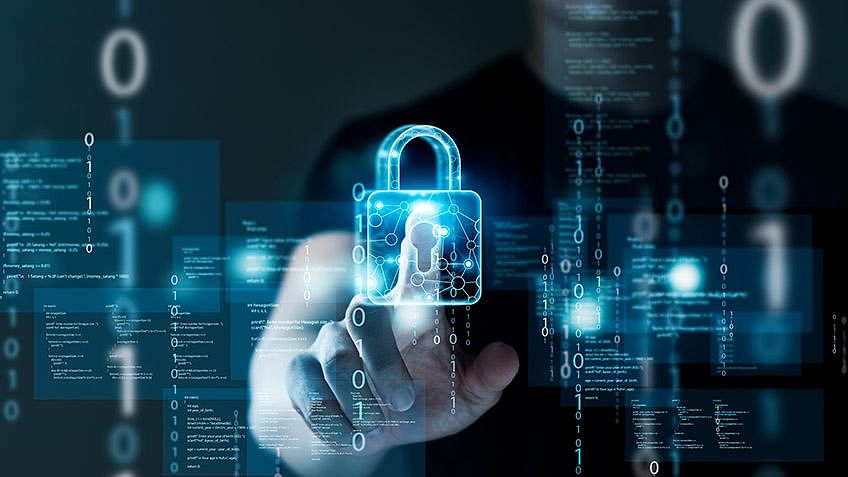The global cyber security market is expected to register a compound annual growth rate of 13.4% by 2029. The increasing need to report security threats and government investments in the protection of sensitive information can be considered as the driving forces of the market. Due to the growing sophistication and frequency of cyber-attacks, businesses worldwide are investing their earnings in advanced cyber security personnel and solutions to protect their sensitive data and assets.
What is cyber security?
The arrangement of technologies, protocols and methods referred to as “cyber security” is intended to guard against attacks, damage, malware, viruses, hacking, data theft and unauthorized access to networks, devices, programs and data. The basic purpose of cyber security is to protect the confidentiality of all business data against external and internal threats and disruptions caused by natural disasters.
Why is cybersecurity a good career choice?
While the zero percent unemployment rate is certainly a compelling reason, it’s essential to consider other reasons before embarking on a career in cybersecurity. The following are some of the reasons why cyber security is a good career choice:
Unlimited career advancement opportunities
The increasing intensity and prevalence of security breaches in an ever-evolving digital landscape clearly indicates the cyber security industry’s increasing demand and growth potential. Abundant opportunities are available for individuals willing to advance their careers in cybersecurity.
High paying job roles
Cyber security is a good career choice, not only because it offers ample career growth opportunities, but also because it is one of the high paying industries. According to Dice’s salary report, Cybersecurity Analysts saw an average salary growth of 16.3% between 2019 and 2020, with an average annual salary of $103,106.
No room for boredom in the workplace
Cybersecurity solutions keep changing with evolving technologies and security threats. New skills and roles evolve to match updated threats and technologies. There is no room for monotony in this career.
Job satisfaction
The ever-growing cybersecurity industry presents its employees with enormous challenges. This enables security personnel to learn and develop themselves to continuously achieve job satisfaction.
Use cases of cyber security
Automatically enrich threat intelligence
Any incident or threat investigation procedure must include enriching threat intelligence. Until now, the procedure has been mainly manual, involving intel analysts manually improving indicators and combing through various trusted sources.
Threat identification in the network
Large-scale enterprise networks take a long time to identify fraudulent applications among thousands of similar programs. Examples include cybersecurity software from Versive, an AI firm that uses dissonance detection to find weak security issues.
Top cybersecurity projects for 2024
Cyber security remains a top priority for organizations worldwide as threats evolve and cyber attacks become more sophisticated. As we move into 2024, various cybersecurity projects are expected to take center stage, addressing emerging challenges and harnessing new technologies to strengthen security postures. Here are some of the top cybersecurity projects for 2024:
1. Zero Trust Architecture Implementation
Overview: Implementing a Zero-Trust architecture involves restructuring network and data access policies to ensure that trust is never assumed, regardless of origin. This means verifying each request as if it originated from an open network. Objective: Minimize the attack surface by enforcing strict access controls and trusting no entity by default regardless of location inside or outside the network perimeter.
2. AI-driven threat detection systems
Overview: Develop AI-driven systems that can predict, detect and respond to cyber threats in real time by analyzing large network data. These systems use machine learning algorithms to identify patterns and anomalies that indicate possible security breaches. Objective: Improve the speed and accuracy of threat detection, reduce false positives and automate response actions to immediately reduce risks.
3. Blockchain for Secure Transactions
Overview: Implementing blockchain technology to secure digital transactions and communications within an organization. This may include the development of decentralized applications (dApps) that use blockchain to ensure the integrity and confidentiality of data exchanges. Objective: Provide a tamper-free and transparent method to conduct secure transactions, improve data security and privacy.
4. Quantum cryptography
Overview: Exploring the use of quantum cryptography to develop secure communication systems that are theoretically immune to decryption by quantum computers. It involves using quantum key distribution (QKD) to secure communications. Goal: Future-proof cryptographic systems against the potential threat posed by quantum computing, to ensure that data remains secure even as computing technology evolves.
5. Advanced phishing protection techniques
Overview: Create more sophisticated phishing detection and prevention systems using advanced machine learning models that can understand the context and subtle cues of phishing attempts better than traditional systems. Goal: Significantly reduce the success rate of phishing attacks, which continue to be a common entry point for security breaches.
6. Secure Access Service Edge (SASE) deployment
Overview: Deployment of SASE, which combines network security functions (such as SWG, CASB, FWaaS and ZTNA) with WAN capabilities to support dynamic secure access. This is especially relevant for organizations that embrace remote work. Objective: Streamline network and security functions in a unified, globally distributed cloud service, improving performance and security for end users regardless of their location.
7. IoT Security Enhancements
Overview: Development of comprehensive security frameworks for IoT devices, which are often vulnerable to attacks due to weak security measures. This includes deploying endpoint security solutions and regular firmware updates. Objective: Strengthen the security of IoT devices across industries, preventing them from becoming entry points for widespread network attacks.
8. Incident Response Automation
Overview: Automating aspects of the incident response process using orchestration tools and predefined playbooks to handle common types of security incidents. This reduces the reliance on manual intervention and speeds up response times. Objective: Improve the effectiveness and efficiency of incident responses, reduce the time attackers are inside the network and reduce damage.
Cyber Security Projects for Beginners
Use cryptographic algorithms for text encryption
To prevent unwanted access by adversaries, information is encrypted by turning it into a hash code or cipher. Through the use of secure keys and authentication procedures, the authorized user was able to access the content.
Keylogger programs
A useful cybersecurity project for beginners is keylogger software. A keylogger is a piece of software that records every keystroke a user types on a keyboard device. This software’s purpose is to keep an eye out for any suspicious or dangerous behavior on the devices by keeping track of user activity.
You can progress to this level once you have developed strong skills on projects at the basic level.
Facial authentication system for the web
You can create a system for user authentication using facial recognition. Systems for conducting exams, processing KYC and even basic mobile devices all use this software extensively.
Scanner for security
We’ve all used security scanners for our devices at some point. Whether it’s making sure your networks are secure or in an angry situation where your devices are acting up.
Advanced cyber security projects
System for user authentication
Although the advanced cyber security project may appear simple, it integrates all the knowledge you have learned from your other projects. You can create a user authentication portal for this project that provides login/registration and login/logout functionality.
System for Image Steganography
The art of steganography involves hiding confidential information within plain text or data. By hiding coded texts in photos, image steganography can be used as a high-level cyber security project.
Cyber security skills required
At every level of software development, a software developer working on top cybersecurity projects is responsible for creating and integrating security technologies such as malware scanners, spyware, intrusion detectors, and more. He or she is also responsible for integrating the required additional cyber security technologies and components to ensure the overall security of the organization’s network and prevent a breach of corporate data.
Tools for monitoring network security
These tools examine network data and find network-based risks. Tools such as Argus, Nagios, Pof, Splunk and OSSEC are examples.
Tools for detecting web vulnerabilities
These software tools evaluate online applications for security flaws such as path fading, SQL injection, and cross-site scripting. Tools such as Burp Suite, Nikto, Paros Proxy and SQLMap are examples.
Advance your career in cybersecurity with Simplilearn
As cyber threats continue to evolve, participating in hands-on projects is essential to building a robust understanding of cyber security. Whether you’re just starting out or looking to advance your skills, the projects detailed in this guide offer valuable insights and practical experience. Consider enrolling in the Advanced Management Program in Cybersecurity to further enhance your expertise. This program equips you with the advanced knowledge and skills needed to excel in the ever-changing landscape of cybersecurity. Secure your future today!
Frequently Asked Questions
1. What projects can be made for cyber security?
The use of cryptographic algorithms for text encryption, Keylogger programs, facial authentication systems for the web, scanners for security, systems for user authentication and system for image steganography are some examples of projects that can be made for cyber security.
2. Will cyber security be in demand in 2023?
Analytics insight projects that 10 million cybersecurity positions will be needed by 2023. Therefore, in 2023 there will be a huge demand for cyber security.
3. What is next generation cyber security?
The phrase “next generation” is now used to describe cybersecurity solutions that promote prevention, efficiency and speed by using real-time predictive techniques, including machine learning (ML), artificial intelligence (AI) and behavioral analytics.
4. What is the XDR platform?
To thwart today’s attacks, XDR is the world’s only comprehensive detection and response platform that natively combines network, endpoint, cloud and third-party data.
5. What is steganography in cyber security?
Data can be hidden or protected using steganography as an additional step in addition to encryption.
Disclaimer for Uncirculars, with a Touch of Personality:
While we love diving into the exciting world of crypto here at Uncirculars, remember that this post, and all our content, is purely for your information and exploration. Think of it as your crypto compass, pointing you in the right direction to do your own research and make informed decisions.
No legal, tax, investment, or financial advice should be inferred from these pixels. We’re not fortune tellers or stockbrokers, just passionate crypto enthusiasts sharing our knowledge.
And just like that rollercoaster ride in your favorite DeFi protocol, past performance isn’t a guarantee of future thrills. The value of crypto assets can be as unpredictable as a moon landing, so buckle up and do your due diligence before taking the plunge.
Ultimately, any crypto adventure you embark on is yours alone. We’re just happy to be your crypto companion, cheering you on from the sidelines (and maybe sharing some snacks along the way). So research, explore, and remember, with a little knowledge and a lot of curiosity, you can navigate the crypto cosmos like a pro!
UnCirculars – Cutting through the noise, delivering unbiased crypto news















